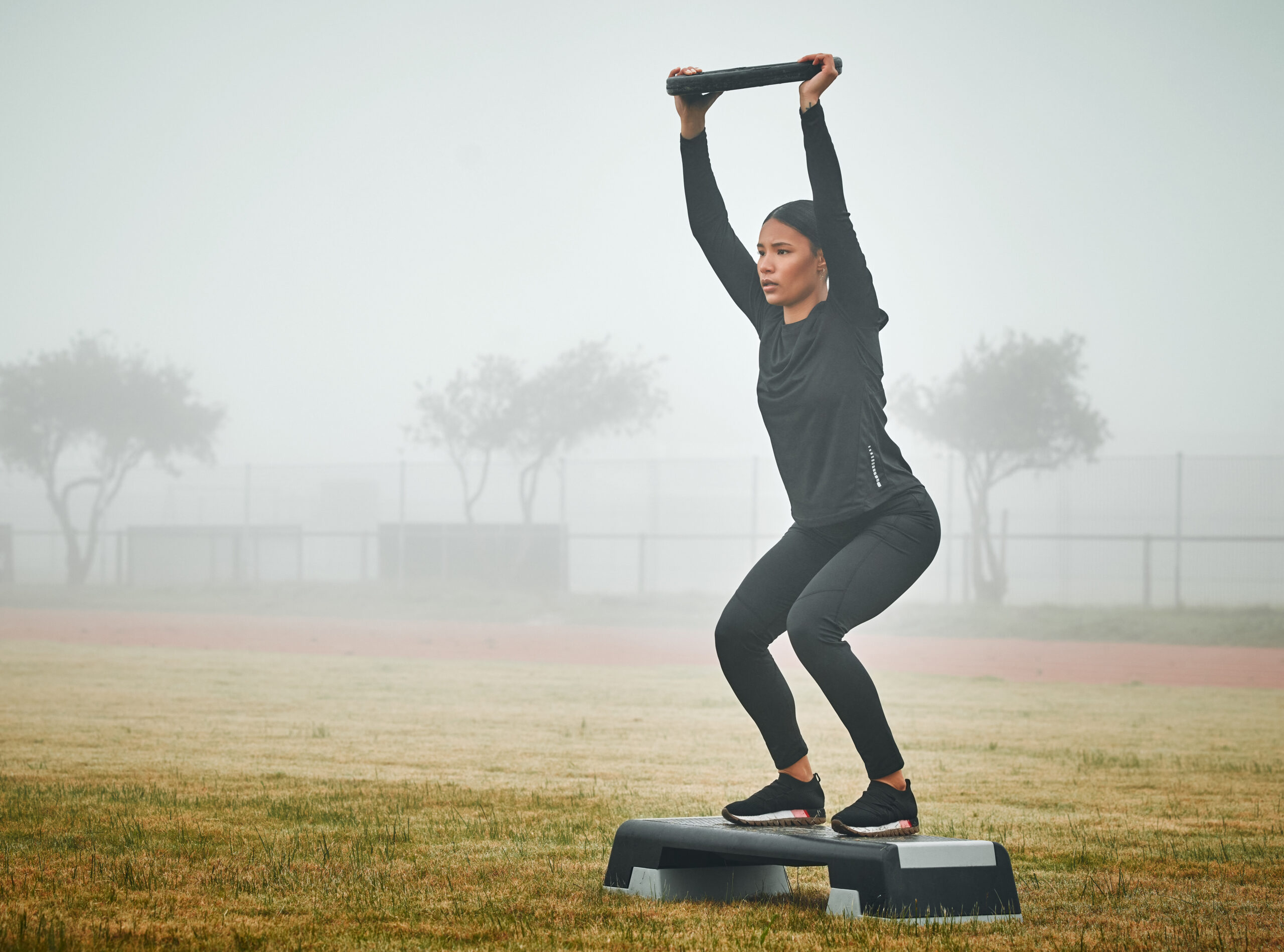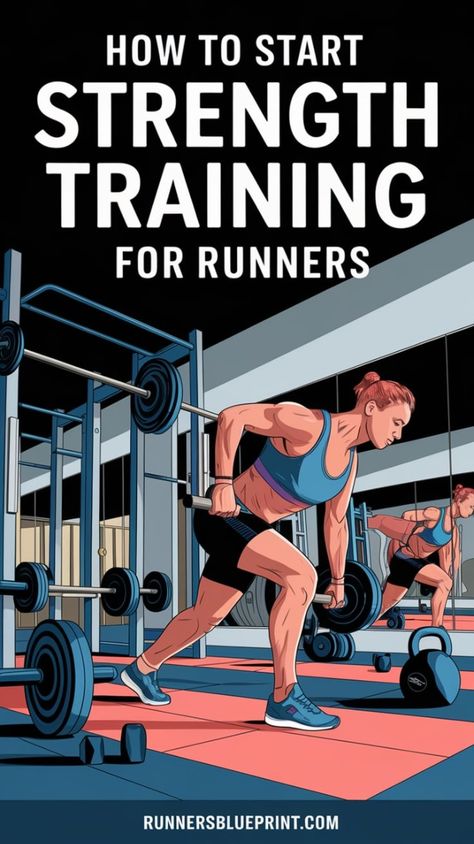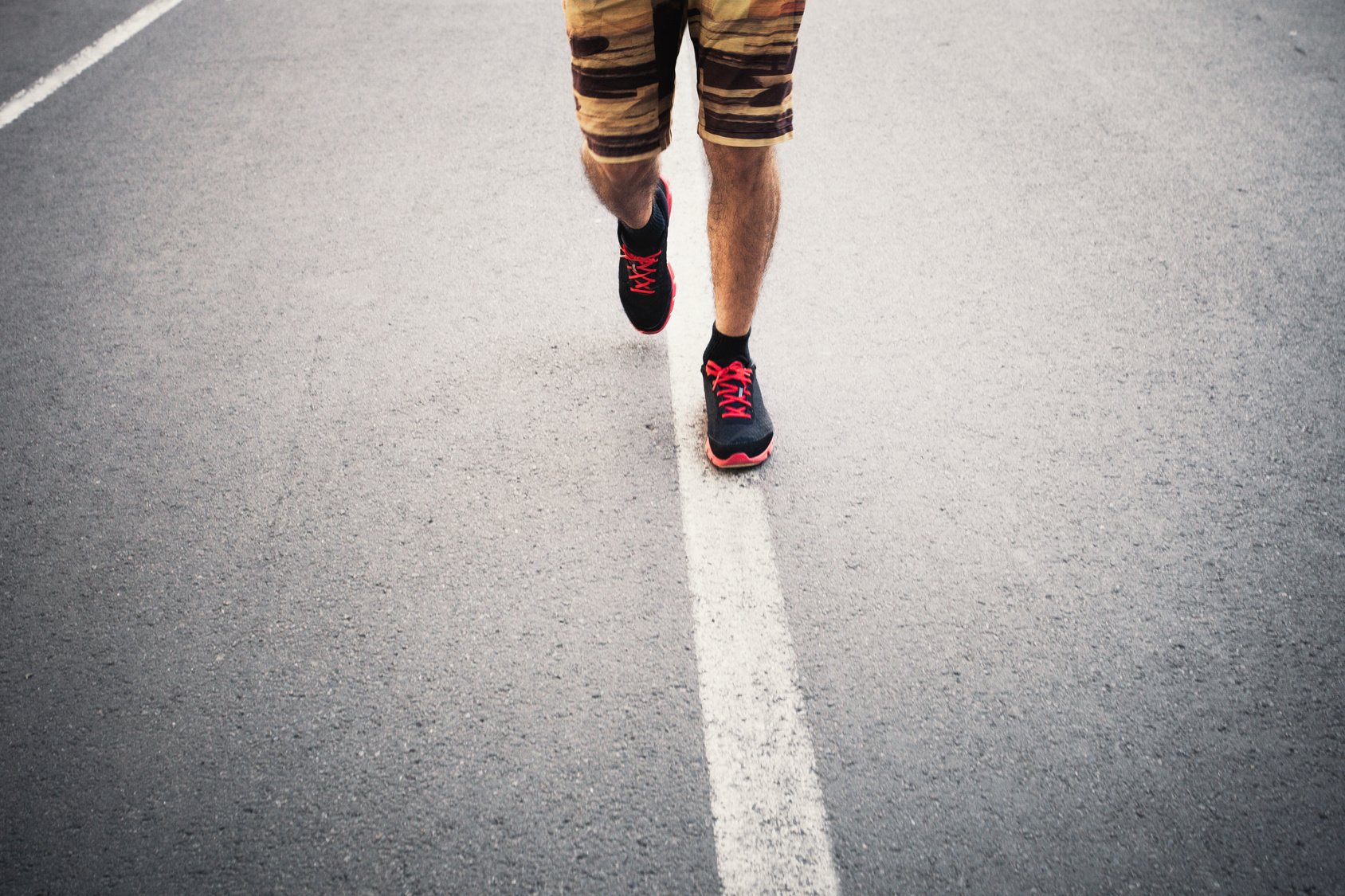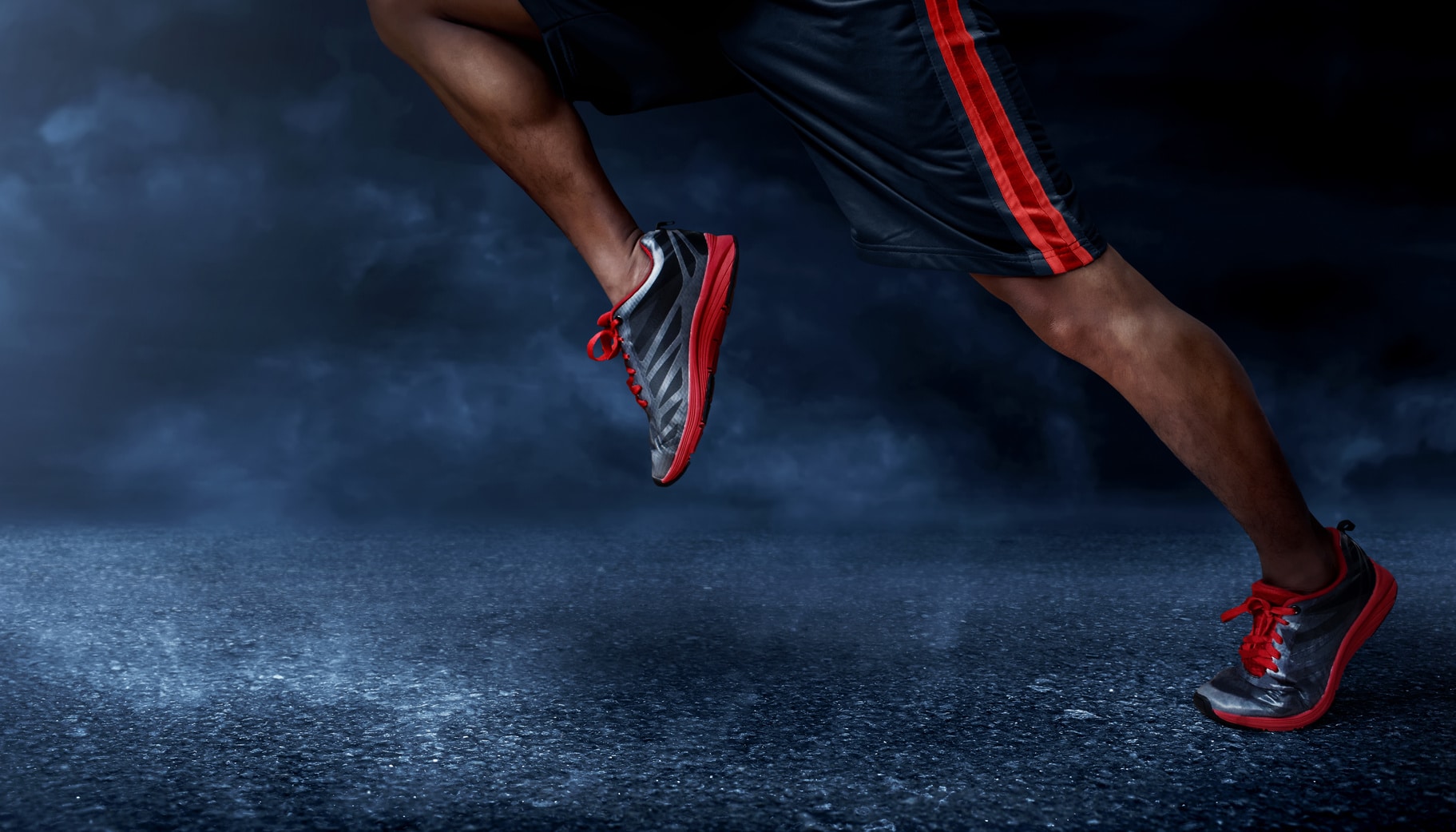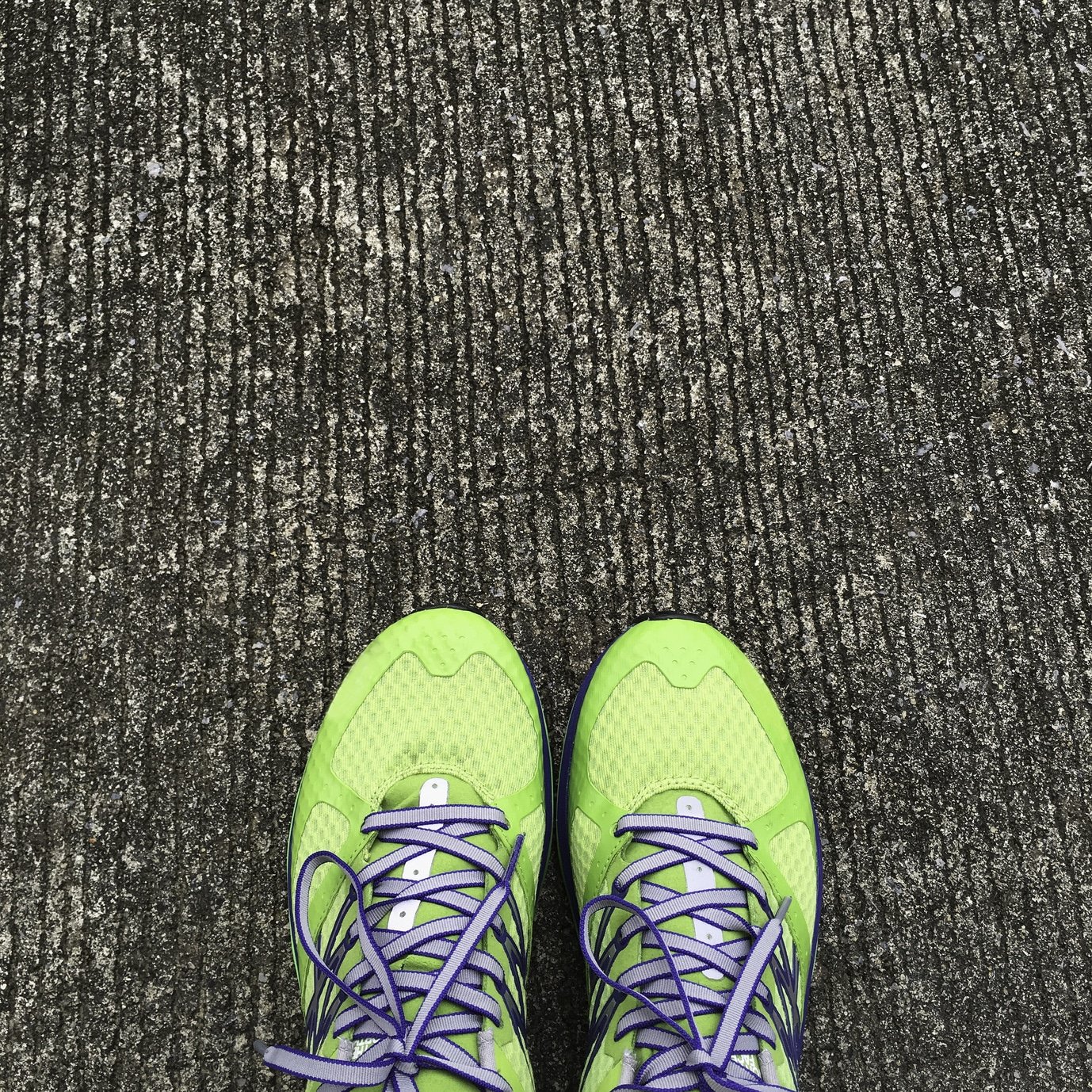Looking to learn about what muscles does running work?
Then you’re in the right place.
Different muscles are used when you log the miles.
In fact, hundreds of muscles work together to propel your body into the forward motion.
But, some running muscles are more important than others.
Here are the muscle groups that targeted, worked, and used, during a running workout.:
- Quadriceps
- Hamstrings
- Gluteals
- Hip Flexors
- Calves
- Thoracic Diaphragm
- Tensor Fascia Latae
- Flexor Hallucis Brevis or Longus
- Tibialis Anterior
- Peroneals
- Core Muscles
- Upper Body Muscles (chest, back, shoulders, etc)
Let’s break down the main muscles used in running, explain their importance, what can go wrong with them, and most importantly, how to strengthen and condition your running muscles.
*Disclosure: This post may contain affiliate links that at no additional cost to you. I only recommend products I’d use myself and all opinions expressed here are our own.
Muscle Anatomy – An Introduction
The human body is an amazing piece of “machinery,” and muscles are a big part of what drives it.
Your muscle tissue consists of protein filaments of actin and myosin.
These slide past one another, producing contractions that shift the shape and length of the cell muscle function to generate motion, force, and torque.
Some of the muscles primary functions include:
- Moving your body
- Keeping you upright,
- Protect internal organs
- Generating heat,
- Supporting organ functions
- And so much more
The Main Muscle Tissue
There are three distinct types: cardiac, smooth, and skeletal.
Each type serves a specific role in the body, with a particular structure and a definite function.
Let’s break down each.
The Cardiac Muscles
Cardiac muscles are found in the walls of the heart.
These are striated—meaning that the muscle fibers contain alternating light and dark bands.
This type of muscle fiber is under the control of the autonomic nervous system — meaning you can’t control the contraction.
Can you imagine if cardiac muscles can be controlled?
That’s gonna be like playing God.
Cardiac muscles are also highly resistant to fatigue thanks to the high concentration of mitochondria, myoglobin, and a decent blood supply allowing for constant aerobic metabolism.
Smooth Muscles
What’s known as the muscles of the organs, smooth muscles are found in the walls of hollow internal structures, such as the stomach, urinary tract, respiratory tract, and in the walls of blood vessels.
Smooth muscles are pretty flexible as they can change shape to regulate bodily functions, such as blood pressure, digestion, breathing, raising hairs, focusing eye, etc.
Skeletal muscles
Last but not least, you also have skeletal muscles (the topic of today’s post).
Skeletal muscles are made of very elastic fibers connected by tissue and named for their location—attached to the bones.
The human body contains more than 650 named skeletal muscles, accounting for about one-third of the human body mass.
Skeletal muscles responsible mostly for movement when performing any form of physical activity, including running.
What Muscles Does
Running Work
Now that you understand a bit what muscles are all about, let’s look into the main muscles that running works the most.
The Quadriceps
As you move your leg forward, you’re primarily using the quadriceps muscles, the muscles located on the front of the thighs.
The quads run from the hips and upper femur down to the patella—the kneecap.
They consist of a group of four muscles that include:
- The Vastus Medialis,
- Vastus Intermedius,
- Vastus Lateralis (vastus externus), and
- Rectus Femoris. See picture.
Functions Of The Quadriceps:
Extending the knee, especially during the “drive” phase.
- Hip flexor. Bending your hips. Your rectus femoris (see picture) is responsible for flexing the hips—the motion necessary to lift your feet off the ground.
- Straightening and stabilizing your knees during running gait as the four heads of the quad are connected to the patella—the kneecap.
- Absorbing the shock of impact upon landing, then dispersing it as it passes through the rest of the body.
Downsides of Weakness
A common dysfunction among many runners is having excessively stronger quadriceps than the hamstrings, the opposing muscle group.
This can have an adverse impact on leg posture and proper positioning, increasing the risks of overuse injury in the lower back, pelvis, hips, and knees.
Exercises For The Quadriceps
Leg extensions
- Leg lifts
- Weighted Lunges
- Squats
The Hamstrings
As your body moves forward, the action switches from the quads to the hamstrings.
The hamstrings span two joints—the hips and knee and are made up of four muscle-parts.
As pictured, these consist of:
- The biceps femoris, (two parts: long head and short head).
- The Semitendinosus, and
- The Semimembranosus
Functions Of The Hamstrings
- Initiating knee bending as your body moves forward
- Flexing your knees, causing your feet to move back toward your butt. This helps provide power to propel you forward.
- Assisting the extension of thighs by moving the upper leg backward.
Downsides of Weakness
As I mentioned earlier, a lot of runners have weaker and/or tighter hamstrings in comparison to the quadriceps.
What’s more, chronic hamstring inflexibility is also widespread in runners who have a sedentary lifestyle.
This can affect the efficiency of the kinetic chain at the hip and knee, increasing the risks of pain and injury.
For these reasons, if you’ve hamstrings limitations, you’re more like to suffer from:
(1) Hamstring strain and tears, which is caused by the muscle’s inability to withstand the load generated by the contracting quad.
(2) Limited running performance due to limited ROM and the diminished power from the knee extensors and hip flexors.
Exercises
- Deadlifts
- Lying leg curls
- Hamstring pushups
- Dynamic stretches (think yoga)
The Gluteal
“Wanna have a perky ass?
Train your glutes!”
Consisting of three overlapping muscles: the Gluteus Maximus, medius, and minimus, the glutes are located in the buttocks and are the main source of power when logging the miles.
Functions of The Glutes
- Stabilizing your hips and legs.
- Extending the hip, then straightening it beneath you.
- Lateral hip rotation as you swing your leg to the outer part of your body.
- Keeping your posture straight, and the trunk stable and upright.
- Maintaining proper knee alignment while running.
Downsides of Weakness
Sitting for prolonged periods of time can tighten and weaken the glutes, causing bad posture and limiting power output.
This leads to excess stress on the lower back, knee pain, contributing to all sorts of running injuries.
For example, research of Div.
III collegiate athlete revealed that subjects who reported suffering from “patellofemoral pain”—the technical name for knee pain—had drastically weaker hip abductor and external rotator muscle of the affected limb.
Exercises
- Squats
- Sumo squats
- Walking lunges
- Clamshells (resistance bands version)
- Glute bridges
Hip Flexors
The hip flexors are the muscles located on the front of the hip, just above the thighs.
Also known as the iliopsoas, every time you lift your leg for any movement, whether when walking, running, or doing any sort of leg lifting motion, the hip flexors are called up into action.
The hip flexors are made of two muscles: the iliacus and the psoas major.
The psoas major is the largest of the muscles, stretching from the T-12 spinal vertebrae to the L5 spinal vertebrae and there it attaches to the femur—your thigh bone.
Functions of The Hip Flexors
- Moving your legs forward and back while working in conjunction with the hamstrings and quads.
- Stabilizing the hip joint.
- Developing good running posture and form.
- Maintaining a standing position (in conjunction with the muscles of the lower leg, core, neck, and shoulders).
- Stabilizing the pelvic region while keeping the hips level.
Downsides of Weakness
Research conducted at Stanford University found that knee-pain prone runners had a relatively weaker hip strength when compared to injury-free runners.
The good news is, most of the injured runners were able to return to training following a six-week hip strengthening training program.
What’s more?
Weak iliopsoas are often blamed for hip pain.
So, if you have a history of hip pain, consider strengthening or stretching these muscles more frequently.
You can also consult a certified physician or a chiropractic specialist for more.
Exercises
- Weighted hip extensions
- Bridges
- Runners lunges
- Skaters squats
- Pigeon
- Seated butterfly stretch
Additional resource – Guide To BCAAs for Runners
The Calves
The calves are the muscles located on the back of the lower leg, below your knees.
They consist of:
- Gastrocnemius (outer calf), forging the clear bulge beneath the skin and
- Soleus (inner calf), which is the flat muscle lying underneath the gastrocnemius muscle.
The two calf muscles attach from the end of your femur to the Achilles Tendon, which inserts into the calcaneus, the heel bone.
Functions of The Calves:
- Providing spring in your step as they help in pushing off the ground to move forward.
- Extending and flexing each foot as you land and push off.
- Providing movement around the ankle joint and the phalanges.
- Maintaining balance and ankle flexion.
- Reducing the shock impact.
Downsides of Weakness
According to research, calves weakness/dysfunction may contribute to a host of injuries, including calf strains, shin splints, Achilles tendonitis, plantar fasciitis, and even hip or hamstring issues.
For instance, weak calves can place excessive strain on the Achilles and damage the fibers that make up the tendon.
Painful?
Sure.
Exercises
- Calf raises
- Farmer’s walk on toes
- Toe lunges
- Jump rope
- Dumbbell jump squat
The Peroneals
The peroneal consists of a group of muscles located in the lower leg bone, or the fibular—the reason they’re often referred to as the fibularis or fibular muscles.
The peronerals are made up of three muscles: the peroneus longus, brevis and tertius.
The longest and most superficial of these is attached near the head of the fibula then courses down most of this bone.
The functions of The Peroneals
- Assisting ankle movement.
- Helping stabilize your big toe and ankle joint against the ground.
- Providing support when standing, whether on both legs or one.
Downside of Weakness
Since these muscles support the movement of your foot, they’re prone to overuse.
Problems in these muscles may cause swelling and pain in the lower leg, ankle, or foot.
These may include:
- Peroneal tendonitis, which is swelling and pain in the peroneal tendons caused by overuse, which later leads to tendinopathy.
- Peroneus longus muscle strain, which is the overstretching of the peroneal muscle caused by a sudden or forceful movement of the foot.
- Peroneal tendon subluxation or dislocation, which is the overstretching of the peroneal tendons when the foot is forcefully moved into dorsiflexion and inversion of the ankle.
- Ankle sprain, everyone must be familiar with this already. This hurts the lateral ligament of your ankles and may damage your peroneal tendons depends on the grade severity.
Exercises
- Standing calf raises
- Resistance bands exercises
- Heel walks
- Lunges
Tensor Fascia Latae
The tensor fascia latae (TFL) refers to a thigh muscle that connects your pelvis to the iliotibial band (ITB), which is a knee-stabilizing band that stretches down the outside of the leg.
That’s why when you have a strong TFL, your knees will be better aligned as you push forward while running.
Functions of The Tensor Fascia Latae
- Helping create medial rotation of the hip, but also helps with hip flexion and hip abduction.
- Stabilizing the hips and pelvis as you raise up each leg.
- Helping provide lateral—or side-to-side—stability to the knee.
- In conjunction with the gluteal muscles, the TFL helps ensure lateral stability around the hip as well as lateral stability around the knee.
Downside of Weakness
Thanks to overuse, the tensor fascia latae can get tight.
When this occurs, it can lead to knee pain and injury such as patellofemoral pain syndrome (PFPS), iliotibial band syndrome (ITBS), and even meniscus injuries.
Exercises
- Hip Hitches
- Side-lying straight leg raises
- Crab walks
- Single-leg squat
- Static Standing TFL Stretch
- Pigeon
Flexor Hallucis Brevis
The flexor hallucis brevis (FHB) is a tiny intrinsic muscle of the foot that lies deep within the sole on the medial aspect.
The FHB is divided in front into two sections, which are interested into the lateral and medial sides of the base of the great toe.
Your big toe is responsible for foot stability and it’s key in push-off.
Anything you can do to improve its function can help improve your running performance and avoid injury.
Functions of The Flexor Hallucis Brevis
- Helping flex the great toe at the metatarsophalangeal joint (MTP joints), especially at the toe-off phase of running gait.
- Helping keep the medial longitudinal arch of the foot
Downside of Weakness
When your hallux can’t bend enough, it forces the impact to go somewhere else, more likely, through tissues that aren’t designed to bear the load.
This can trigger a chain reaction of issues going up your leg—starting from tingling, sole discomfort, plantar fasciitis, Achilles injury to calf strains, and more.
Exercises
- Toe Gripping
- Resistance Band
- Toe walks
Tibialis Anterior
The anterior tibialis is another less-common yet very important running muscle.
It consists of a muscle-tendon unit that stretches down the front of the shin, on the outside of the fibula—or the shin bone.
Functions of The Tibialis Anterior
- Responsible for dorsiflexing your ankle—as in pulling your foot up towards your knee.
- Helping position the foot to prepare for impact while your leg is still air-born.
- Assisting in foot inversion
Downside of Weakness
A few problems can strike this muscle that may cause functional mobility issues. These may include
- Shin splints
- Anterior tibialis tendonitis
- Sciatica (radiating) pain on the shin
Exercises
- Heel walks
- Toe raises
- Single-leg hops
The Supporting Running Muscles
If you have the slightest understanding of human anatomy and the biomechanics involved in moving from point A to point B, then you already realize that running isn’t just about your legs.
As I mentioned earlier, running doesn’t just use your leg muscles.
It’s full bodywork.
The muscles of your upper body and the core are needed to keep good form, ensure movement efficiency, and help in forward motion.
Thoracic Diaphragm
The diaphragm refers to the muscle that separates the abdomen from the chest cavity.
It consists of a fibromuscular structure that sits at the base of the chest and divides the abdominal organs from your lungs.
When you breathe, this muscle contracts and relaxes, pulling air into the lungs, then pushing it out.
That’s why this muscle is key for optimal lung capacity.
Since the diaphragm is the main breathing muscle, certain activities, such as running, can be painful if this muscle is not used to such intensity or already impaired in some capacity.
But whether logging the miles can actually cause diaphragmic injury is another question.
The Functions
- On the inhale, the diaphragm contracts and depresses, pulling air into your lungs.
- On the exhale, the diaphragm relaxes and pushes the carbon dioxide out, the build-up of which can trigger anxiety and breathlessness.
- Increasing abdominal pressure to help your body get rid of urine, feces, and vomit.
- Putting pressure on the esophagus to prevent acid reflux.
Downside of Weakness
Technically there’s no such thing as an overuse running injury of the diaphragm, but you can still hurt this muscle, especially in contact sports.
Contusions are caused by continuous and/or direct trauma to certain body parts, which damages the underlying muscle fibers without actually breaking tearing the skin.
That’s why to injure your diaphragm while running, you’d to run into a sharp object, fall hard on your side, experience some other type of traumatic accident.
Additional resource – Does running build muscles?
Exercises
The best diaphragmic exercise, besides regular running, is to practice diaphragmatic breathing.
This helps you use the diaphragm the right way while breathing.
Check this YouTube Tutorial
In the gym, you can target this muscle by doing rotational lunges that help simulate running imbalances.
The Core Muscles
Most of the core muscles, including the abs, paraspinal, pelvic floor, obliques, erector spinae, multifidus, diaphragm, and hip girdle muscle, are vital for a runner’s form.
You can have the strongest legs in the universe, but without a strong core, you won’t be able to put your legs’ strength into work.
Furthermore, strength and stability in the core region can also protect your spine and lower back from the impact of running.
The Functions Of The Core
- Maintaining balance and controlling joint movement.
- Improving the energy transfer between your upper and lower body, helping your body work as one single unit.
- Keeping you standing upright and avoiding an excessive forward lean that can put undue pressure on your lower back.
Downside of Weakness
With a weak core, you’ll be unable to reap the above benefits, which can drastically hinder your running performance, and might even increase the risks of injury.
Exercises
- Planks
- Russian twists
- Crunches
- Kettlebell swings
- Pilates
Upper Body Muscles
Though not targeted directly, several muscle groups in the upper body are used while running.
The most important ones include the muscles of the arms, chest, back, and shoulders.
Arms
Your arms help maintain a rhythmic motion that’s in tune with the lower body—key for efficient running—so strengthening them can improve form efficiency and balance.
To get more of the arm swing, bend your arms at the elbows and swing them back and forth during the running gait cycle.
Chest Muscles
What’s known as the pectorals, these consist of two large, and flat, muscles that course across the surface of your chest.
These help move your arms to cross your body and up and down as well other movements like adduction, flexion, and rotation.
This is why you should keep your chest up.
Biceps
Your biceps branchii, better known as the biceps, is key for maintaining a bent arm.
Strong biceps help you swing your arms back and forth with more power.
Shoulders
Tese are located above the elbows and allow you to flex your elbows and rotate your forearms, which help swing them back and forth to enhance balance and forward propulsion.
The Scalene Muscles
The scalene muscles consist of three pairs of neck muscles:: scalenus anterior, scalenus medius, and scalenus posterir.
These help tilt, flex, and rotate your neck, helping maintain good posture as you log the miles.
They also help with breathing by lifting up your ribs, especially when doing heavy exercise.
The Back
What’s known as the latissimus Dorsi, which is the triangular-shaped muscle stretching running across your back from your shoulders to the top of your glutes.
The main roles are to power arm movement, especially the backward swing and the downward pull, as well as keep your torso upright.
The other role is an extension and lateral flexion of the lumbar spine.
Exercises
- Pushups,
- hammer curls,
- bicep curls,
- shoulder presses,
- pull-ups,
- kettlebell swings,
Note: Sure, a bulky, heavy, upper body will only slow you down. But to make the most of strength training, you won’t need to become a full-time strongman.
All you need is two to three 20 to 30 minutes of strength sessions per week.
Of course, feel free to do more, if that’s what you want.
Put it in your schedule as a part of your cross-training.
What muscles does running work – The Conclusion
There you have it.
Today’s short anatomy introduction into the main running muscles should help you start to better understand how your body moves as well as how to improve it.
Now that you know what muscles does running work, it’s up to you to take care of them.
The rest is just details, as the saying goes.
Please feel free to leave your comments and questions in the section below.
In the meantime, thank you for dropping by.



